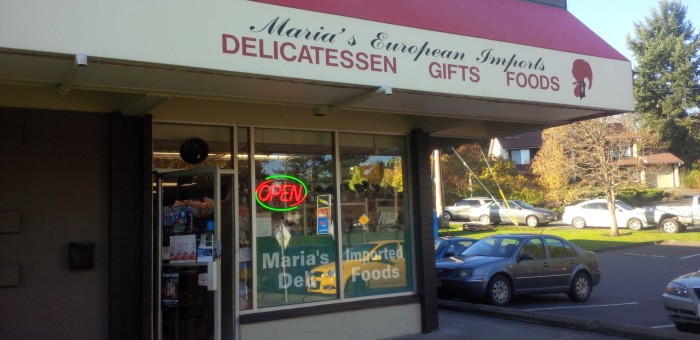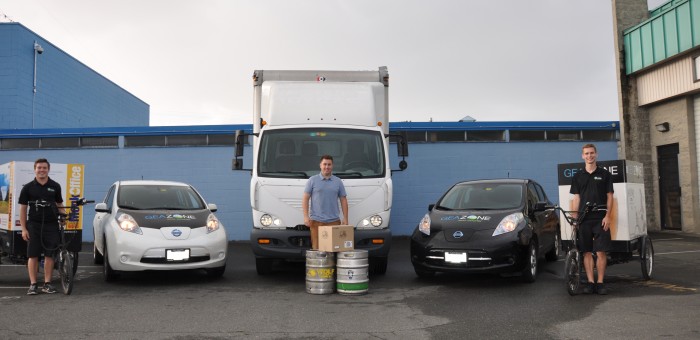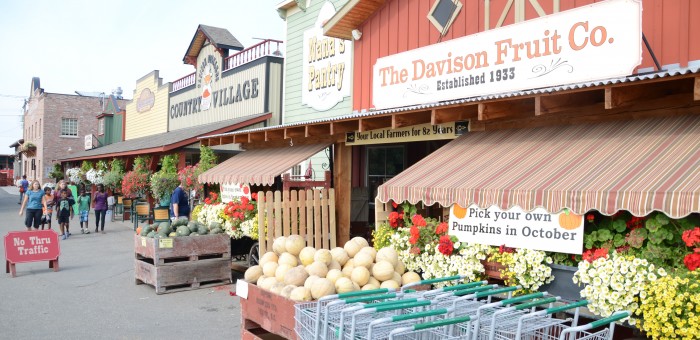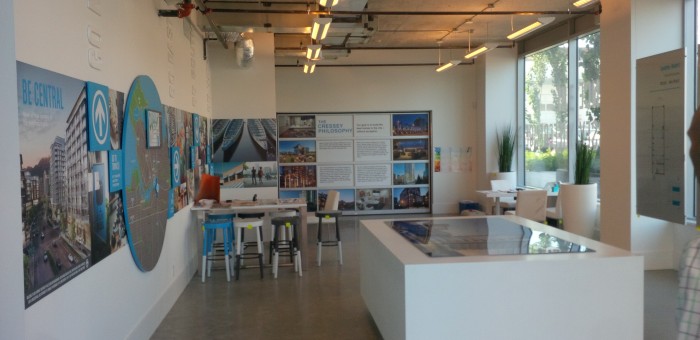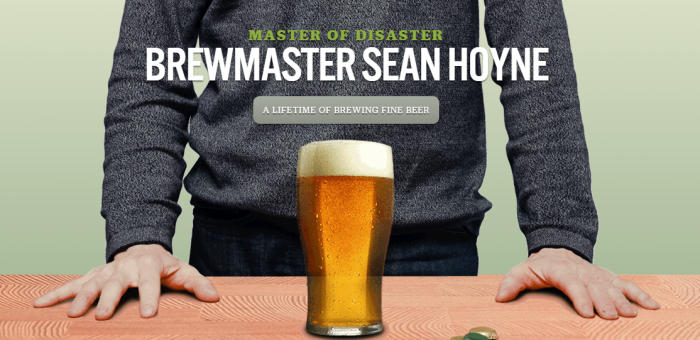Celebrating Local Businesses
Celebrating Local Businesses in Our Community – Maria’s Deli
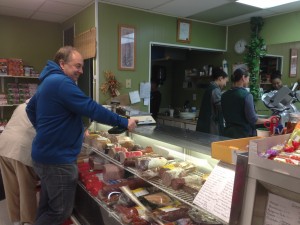 Strategically scheduling the meeting around lunch time, I was delighted to be back at Maria’s Deli – a staple during our campaign in 2013. Leading up to the last provincial election my campaign office was located across the street from this amazing deli on Shelbourne and Feltham and I credit them with keeping my team well fed and happy throughout every long, busy day. A family focused business, Maria’s Deli was started in 1977 by Maria Pereria and her husband Floyd. Though they both immigrated to Canada from Sao Miguel Portugal, Maria and Floyd didn’t meet until they signed up for the same English class at Vic High.
Strategically scheduling the meeting around lunch time, I was delighted to be back at Maria’s Deli – a staple during our campaign in 2013. Leading up to the last provincial election my campaign office was located across the street from this amazing deli on Shelbourne and Feltham and I credit them with keeping my team well fed and happy throughout every long, busy day. A family focused business, Maria’s Deli was started in 1977 by Maria Pereria and her husband Floyd. Though they both immigrated to Canada from Sao Miguel Portugal, Maria and Floyd didn’t meet until they signed up for the same English class at Vic High.
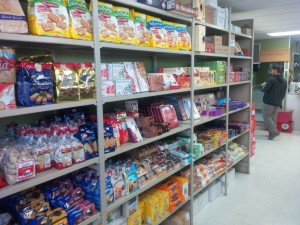 Their shop has been in the same location for 38 years and though it is now largely run by their daughter Susan Coombs, it hasn’t changed much. When I arrived Susan was behind the counter cheerfully helping an older customer. Switching between speaking English and Portuguese she says, “She has been coming here as long as I can remember!” Her parents opened the deli the year after she was born and she spent much of her childhood here helping out and visiting with customers, officially starting to work for them when she was 14.
Their shop has been in the same location for 38 years and though it is now largely run by their daughter Susan Coombs, it hasn’t changed much. When I arrived Susan was behind the counter cheerfully helping an older customer. Switching between speaking English and Portuguese she says, “She has been coming here as long as I can remember!” Her parents opened the deli the year after she was born and she spent much of her childhood here helping out and visiting with customers, officially starting to work for them when she was 14.
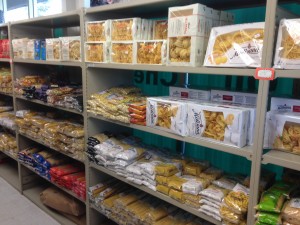 Now Susan works there with her own daughter, who just finished high school. “The people are the most enjoyable part of working here,” they both agree. It shows too, the place is bustling with people greeting one another and chatting as they shop. Two construction workers come in to get lunch, “I’ve been coming here for 20 years!” one of them tells me even though he looks like he’s hardly 30. He helps another customer read the label on a tin of cookies as Susan makes their sandwiches, slicing their choice of meat and cheese from the huge selection in front of them. Amazingly, their lunch costs less than $5.00. There are fridges stacked with 10 kilo rounds of cheese and an incredible variety of olive oil, vinegar, pasta, and meat. A baker from Esquimalt walks in carrying a tray of Portuguese buns on her shoulder, she delivers buns to Maria’s Deli nearly every day, she says. Today she is dropping off 20 dozen.
Now Susan works there with her own daughter, who just finished high school. “The people are the most enjoyable part of working here,” they both agree. It shows too, the place is bustling with people greeting one another and chatting as they shop. Two construction workers come in to get lunch, “I’ve been coming here for 20 years!” one of them tells me even though he looks like he’s hardly 30. He helps another customer read the label on a tin of cookies as Susan makes their sandwiches, slicing their choice of meat and cheese from the huge selection in front of them. Amazingly, their lunch costs less than $5.00. There are fridges stacked with 10 kilo rounds of cheese and an incredible variety of olive oil, vinegar, pasta, and meat. A baker from Esquimalt walks in carrying a tray of Portuguese buns on her shoulder, she delivers buns to Maria’s Deli nearly every day, she says. Today she is dropping off 20 dozen.
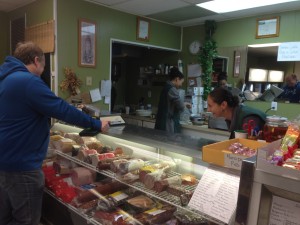 Susan and her daughter joke and laugh as they work and another customer proudly tells me they’ve been coming here for years. “Oh and her mother in law too!” Susan says, “We go way back.”
Susan and her daughter joke and laugh as they work and another customer proudly tells me they’ve been coming here for years. “Oh and her mother in law too!” Susan says, “We go way back.”
Maria’s Deli is a wonderful mainstay in this community, feeding generations of families – and campaign teams lucky enough to work nearby.
Celebrating Local Businesses in Our Community – Geazone
 A four-time Canadian National Downhill Mountain Bike champion, Geazone’s president and CEO Andrew Mitchell is used to taking risks and working fast. “In downhill racing you have to live in the future, anticipating and preparing for what is around every corner on the trail,” said Geazone’s director of sales and marketing Greg Parish. When it comes to business, it seems Andrew takes the same approach.
A four-time Canadian National Downhill Mountain Bike champion, Geazone’s president and CEO Andrew Mitchell is used to taking risks and working fast. “In downhill racing you have to live in the future, anticipating and preparing for what is around every corner on the trail,” said Geazone’s director of sales and marketing Greg Parish. When it comes to business, it seems Andrew takes the same approach.
Geazone is a zero-emission courier company that uses tricycles, electric cars, and 5-tonne electric trucks to do their deliveries. On a full charge, Geazone’s electric fleet can deliver goods from Victoria to Nanaimo, and everywhere in between, without emitting a single gram of greenhouse gases. They do a Victoria to Vancouver run too, taking beer into the city and stopping to pick up hops for Victoria breweries on the way back.
Geazone presently has 100 active clients, many of them breweries, including Lighthouse, Red Arrow, Saltspring Island Ales, Wolf Brewing Company, and Hoyne. “The local beer and wine sectors seem to be the ones going green first,” said Andrew of his clients.
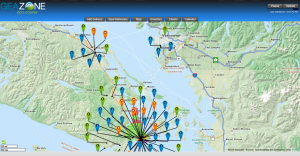 Over the course of this series it has been amazing to see so many B.C. entrepreneurs working together to support one another’s visions for business done better. When I met with Sean Hoyne, of Hoyne Brewing Company, he talked about how his brewery has partnered with Geazone to deliver their beer. “I like supporting Andrew because he is a young entrepreneur doing the right thing,” Sean told me. His praise was well deserved and wonderfully timed as I already had a meeting with Geazone booked for the following month.
Over the course of this series it has been amazing to see so many B.C. entrepreneurs working together to support one another’s visions for business done better. When I met with Sean Hoyne, of Hoyne Brewing Company, he talked about how his brewery has partnered with Geazone to deliver their beer. “I like supporting Andrew because he is a young entrepreneur doing the right thing,” Sean told me. His praise was well deserved and wonderfully timed as I already had a meeting with Geazone booked for the following month.
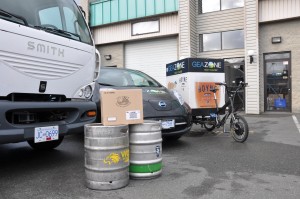 Geazone has doubled its growth every year since they opened for business in 2012. In just three years they have prevented over 100,000 kg of carbon emissions from entering the atmosphere and they don’t plan on slowing down anytime soon. Up next, they hope, is the addition of electric semi-trucks to their fleet (which can travel 160km/charge), a warehouse in Vancouver, and extra charging stations to broaden their range. “By the time people catch on we’ll be five years ahead,” said Greg.
Geazone has doubled its growth every year since they opened for business in 2012. In just three years they have prevented over 100,000 kg of carbon emissions from entering the atmosphere and they don’t plan on slowing down anytime soon. Up next, they hope, is the addition of electric semi-trucks to their fleet (which can travel 160km/charge), a warehouse in Vancouver, and extra charging stations to broaden their range. “By the time people catch on we’ll be five years ahead,” said Greg.
If Geazone replaced one of the semi-trucks delivering beer from Victoria to the British Columbia liquor distribution branch (BCLDB) in Vancouver with an electric model they would reduce carbon dioxide emissions on that route by roughly 37,000 kg per year.
Let’s take a look at the numbers:
- The round trip is about 140 km.
- The trucking industry vehicle fleets average 35-40 litres/100 km (so let’s choose 38).
- This means that on average a single round trip would use 140 km x (38 litres/100 km) = 53 litres of diesel (that would cost about $64 per trip at a price of $1.20 per litre).
- Now according to the US Energy Information Administration, 22.38 pounds of carbon dioxide are emitted during the combustion of one US gallon of diesel. This converts to 2.7 kg/litre.
- And so the average round trip in a diesel-powered truck would release 2.7 kg/litre x 53 litres = 143 kg of carbon dioxide emissions to the atmosphere.
- Now if we assume that only one trip can be made a day so that 260 trips occur each year with trucks operating only Monday through Friday, then in one year, 143 kg x 260 trips = 37,000 kg of carbon dioxide is emitted (and the annual cost of fuel would be $64 x 260 trips = $16,640).
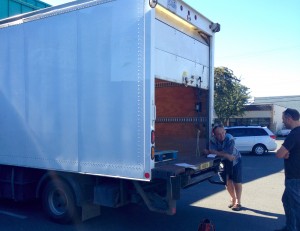
Cost-wise, their services are not more expensive than their diesel-reliant counterparts. If anything, Andrew said, they are more competitive than non-electric couriers because they don’t have to buy gas. Typical couriers will spend $80.00 or so on fuel per full day of deliveries; it costs Geazone $2.00 to charge up a Nissan Leaf for the day and $10.00 – $12.00 to charge their 5-ton trucks. Coming back to the numbers, the net annual operating savings on that return trip from Victoria to the BCLDB in Vancouver would be about $14,000 for a single truck.
That said, large courier companies do have the ability to undercut the market in a way Geazone cannot. But Andrew’s clients back him up, he said, and support Geazone because they believe in what he is doing.
The wider community in Victoria is getting on board too and the bike couriers are always a big hit at events and festivals, Andrew said. We found it amusing to learn that the Geazone team have been scolded on a few occasions by concerned citizens for leaving their trucks running while they load. “I told them it was electric but they didn’t believe me!” said Greg with a laugh. “I had to show them that the truck doesn’t even have an exhaust pipe — then they were impressed.”
Geazone is leading the way in BC with innovative zero-emission transport solutions. And at the same time, they’re saving money and creating job growth in the emerging 21st century economy.
Celebrating Innovation in Okanagan’s Agricultural Community
BC’s Agricultural Economy
Many of us take for granted the importance of agriculture in the BC economy. When combined with our seafood and food and beverage manufacturing, this so-called agrifoods sector contributes 1.9% of our provincial GDP.
When you look at farm cash receipts (the money received from the sale of agricultural commodities plus any direct program payments made to support or subsidize the agriculture sector), a whopping $2.8 billion flowed into the BC economy in 2013. According to statistics compiled by BC’s Ministry of Agriculture,
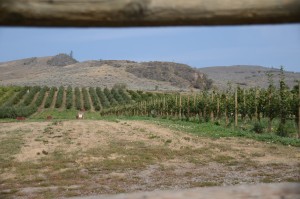 “Total farm cash receipts from the sale of crops, including grains, oilseeds, tree fruits, berries, grapes, field and greenhouse vegetables, floriculture, nursery, forage and other crops, amounted to nearly $1.4 billion in 2013, up 2.7 per cent over 2012 and up 12 per cent over the previous five year average. Total livestock receipts, from the sale of cattle, hogs, poultry, eggs, dairy, honey and other animals and animal products, amounted to more than $1.4 billion, up one per cent over 2012 and up eight per cent over the previous five year average.“
“Total farm cash receipts from the sale of crops, including grains, oilseeds, tree fruits, berries, grapes, field and greenhouse vegetables, floriculture, nursery, forage and other crops, amounted to nearly $1.4 billion in 2013, up 2.7 per cent over 2012 and up 12 per cent over the previous five year average. Total livestock receipts, from the sale of cattle, hogs, poultry, eggs, dairy, honey and other animals and animal products, amounted to more than $1.4 billion, up one per cent over 2012 and up eight per cent over the previous five year average.“
British Columbia also exports its agricultural products around the world. In 2013, agricultural exports amounted to $1.8 billion. Our top five export markets are: 1) United States [76%]; 2) China [4%]; 3) Japan [4%]; 4) Taiwan [2%]; 5) Hong Kong [2%].
What’s more, there were 19,759 farms in British Columbia in 2011, the last year for which census data are available, with 98 % of them being family-controlled farms and with over 54% of their farm operators being 55 years of age or older.
A conversation with Richard Bullock
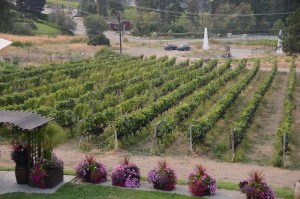 British Columbia is broken up into eight agricultural regions and last week I had the distinct pleasure of touring around the Okanagan region to meet with local civic leaders and business owners to get a sense of the opportunities and challenges facing the Okanagan.
British Columbia is broken up into eight agricultural regions and last week I had the distinct pleasure of touring around the Okanagan region to meet with local civic leaders and business owners to get a sense of the opportunities and challenges facing the Okanagan.
The Okanagan, has long been known for its tree fruit and grape production (and hence its wine industry), so what better place to start the tour than a meeting in Kelowna with, and at the family farm of, Richard Bullock, the past Chair of the Agricultural Land Commission. As the former president of the BC Fruit Growers’ Association, BC Tree Fruits Ltd., and Sun-Rype Products Ltd., and as a former Director of the Canadian Federation of Agriculture and Chair of the British Columbia Farm Industry Review Board, Mr. Bullock is certainly a wealth of information. He provided valuable advice concerning the need for Agricultural policies to be focused on the regional scale that reflect both the type and scale of producer. We also explored the importance of ensuring that water infrastructure, including reservoirs, keep pace with agricultural development as well as means and ways that smaller Okanagan tree fruit growers can compete against large-scale grow operations in other jurisdictions, such as Washington State.
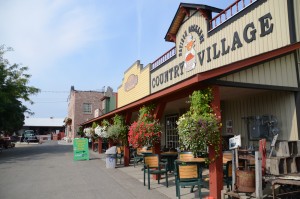 Mr. Bullock was extremely bullish on the agricultural industry in BC stating that he had “never seen the excitement in agriculture before in the last 10 to 15 years”. The numbers back up his sentiments. Agriculture exports increased by 12% in 2014 to $2 billion.
Mr. Bullock was extremely bullish on the agricultural industry in BC stating that he had “never seen the excitement in agriculture before in the last 10 to 15 years”. The numbers back up his sentiments. Agriculture exports increased by 12% in 2014 to $2 billion.
As I noted above, one of the challenges for Okanagan tree fruit growers is keeping fruit prices competitive with the larger growers in the United States and elsewhere. While the low Canadian dollar will surely provide a windfall for BC growers, other local farms have found innovative ways of ensuring that their business is resilient to market fluctuations. One of them, and one that I had the distinct honour of touring, is Davison Orchards Country Village in Vernon.
Davison Orchards Country Village
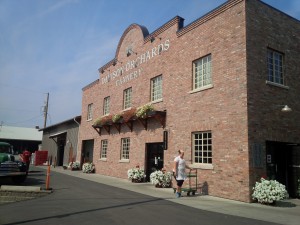 Davison Orchards has been in the Davison family since 1933 and it is now operated by Tom and Tamra Davison (the 3rd generation). Their children (Lance and Laura – the 4th generation) and Tom’s parents (Bob and Dora – the 2nd generation) all work on the farm. Davison orchards offers everything: producing food; capitalizing on tourism opportunities; selling produce and value-added food products (pies, jams etc.) directly to the consumer; offering a location to host private events. What’s more, their on-site café redefines what it means to live on a 100-mile diet as many of the menu items come directly from their farm.
Davison Orchards has been in the Davison family since 1933 and it is now operated by Tom and Tamra Davison (the 3rd generation). Their children (Lance and Laura – the 4th generation) and Tom’s parents (Bob and Dora – the 2nd generation) all work on the farm. Davison orchards offers everything: producing food; capitalizing on tourism opportunities; selling produce and value-added food products (pies, jams etc.) directly to the consumer; offering a location to host private events. What’s more, their on-site café redefines what it means to live on a 100-mile diet as many of the menu items come directly from their farm.
The Davison family is committed to the long-term sustainability of their land and their goal “is to produce fresh, high quality fruit and vegetables in a safe, sustainable and environmentally sensitive manner.” Several hundred thousand people a year visit the Davison orchards which employs upwards of 100 people during the May 1-October 31 season. Everything on the property is sold directly to consumers and the family also supports other farmers in the area by buying their produce and products and subsequently retailing them at their location.
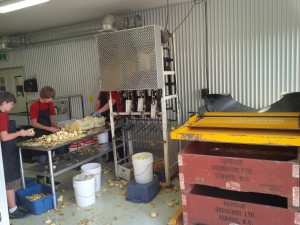 I was extraordinarily impressed at the innovation and creativity exhibited by Tom and Tamra, who gave me the tour of their property. They outlined how people move around from job to job to ensure they can offer stable employment opportunities. For example, the baker becomes the jam maker as the need arises. They also explained to me that it was tough for a small, ~100 acre orchard, to compete in the apple sector when over 100 million 18 kg boxes of apples are picked a year in Washington State just south of the border. But the remaining 1/3 acre of apples left in their orchard certainly allows them to offer visitors first-rate home-baked apple pies.
I was extraordinarily impressed at the innovation and creativity exhibited by Tom and Tamra, who gave me the tour of their property. They outlined how people move around from job to job to ensure they can offer stable employment opportunities. For example, the baker becomes the jam maker as the need arises. They also explained to me that it was tough for a small, ~100 acre orchard, to compete in the apple sector when over 100 million 18 kg boxes of apples are picked a year in Washington State just south of the border. But the remaining 1/3 acre of apples left in their orchard certainly allows them to offer visitors first-rate home-baked apple pies.
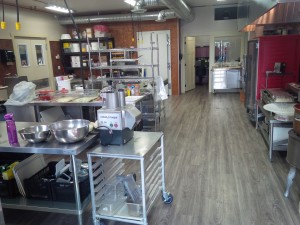 Davison Orchards has become one of the most visited tourist attractions in the area. In fact, Trip Advisor presently lists them as #1 of 35 things to do in Vernon based on 269 reviews earning them a Certificate of Excellence. And their Facebook page is continually updated with what’s in season, ongoing activities and interesting stories about the workings of the orchard.
Davison Orchards has become one of the most visited tourist attractions in the area. In fact, Trip Advisor presently lists them as #1 of 35 things to do in Vernon based on 269 reviews earning them a Certificate of Excellence. And their Facebook page is continually updated with what’s in season, ongoing activities and interesting stories about the workings of the orchard.
Davison orchards has figured out how to thrive through innovation. They’ve accomplished this by not only producing fresh and value added food products that they sell on site, but also through recognizing the tremendous opportunities in the tourism sector. The family-friendly atmosphere they have created means that there are fun things to do for everyone in a family — young and old. It’s a wonderful example of success in the agriculture industry.
Summerhill Pyramid Winery
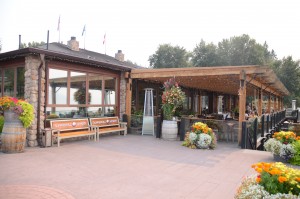 I was also delighted to have the opportunity to be taken around Summerhill Pyramid Winery by its CEO, Ezra Cipes. This allowed me to learn more about the Okanagan’s thriving wine industry.
I was also delighted to have the opportunity to be taken around Summerhill Pyramid Winery by its CEO, Ezra Cipes. This allowed me to learn more about the Okanagan’s thriving wine industry.
Summerhill Pyramid Winery is quite unique. It was Canada’s largest organic wine producer and BC’s first winery to receive (in 2012) Demeter Biodynamic certification. Established in 1991 on land purchased in 1986 by Ezra’s parents Stephen and Wendy Cipes, Summerhill comprises eighty acres of land of which only forty are planted with grapes. As part of the Demeter certification, twenty acres of the Summerhill property were placed under a restrictive covenant with The Land Conservancy of BC to ensure that biodiversity and natural habitat were protected. An additional twenty acres comprise meadows and composting areas.
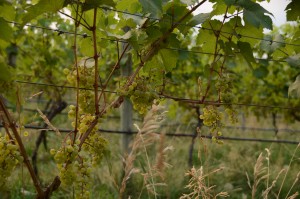 Winemaker Eric von Krosigk co-founded Summerhill in 1991 with the Cipes. He left temporarily in 1994 once the winery was up and running and rejoined Summerhill again in 2006. Ezra took over the day-to-day operations of Summerhill in 2008 and a year later, Summerhill Pyramid Winery was named Canadian Wine Producer of the Year at the International Wine and Competition in London, England. Today, Summerhill produces around 30,000 cases of wine a year, supports another 200 acres of other family-owned vineyards by buying their grapes, and supports around 40 full time employees. In 2014, they wrote paychecks for 270 people.
Winemaker Eric von Krosigk co-founded Summerhill in 1991 with the Cipes. He left temporarily in 1994 once the winery was up and running and rejoined Summerhill again in 2006. Ezra took over the day-to-day operations of Summerhill in 2008 and a year later, Summerhill Pyramid Winery was named Canadian Wine Producer of the Year at the International Wine and Competition in London, England. Today, Summerhill produces around 30,000 cases of wine a year, supports another 200 acres of other family-owned vineyards by buying their grapes, and supports around 40 full time employees. In 2014, they wrote paychecks for 270 people.
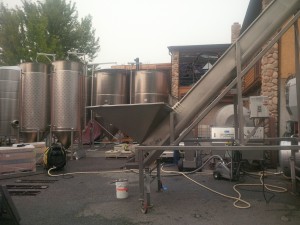 Like Davison Orchards, Summerhill has recognized the incredible opportunities in tourism and through offering value-added services (a restaurant and a location for wedding receptions). Fully 55% of Summerhill’s wine is sold on-site with 2,000 cases passing through their restaurant and wedding reception operations.
Like Davison Orchards, Summerhill has recognized the incredible opportunities in tourism and through offering value-added services (a restaurant and a location for wedding receptions). Fully 55% of Summerhill’s wine is sold on-site with 2,000 cases passing through their restaurant and wedding reception operations.
Summerhill takes tourism seriously. When we arrived at Summerhill Pyramid Winery last Tuesday, the parking lot was full and a bus load of Asian tourists were admiring the beautiful views of Lake Okanagan. They have fully restored a cabin used by one of the original settlers to the area and built a replica of a scared earth First Nation house nearby (unfortunately this was being renovated when we visited). In addition, a nature/historical walk was being prepared through their property.
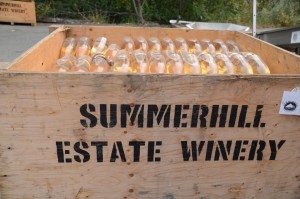 It should be no surprise to find out that Summerhill also received a Certificate of Excellence from Trip Advisor. But of course, and most importantly, the wine was exceptional. In the end I bought a bottle of 1998 Cipes Ariel after sampling it at the winery. The Vancouver Sun has described this as “one of the finest sparkling wines ever made in British Columbia” and I can certainly attest to it being perhaps the finest I have ever tasted.
It should be no surprise to find out that Summerhill also received a Certificate of Excellence from Trip Advisor. But of course, and most importantly, the wine was exceptional. In the end I bought a bottle of 1998 Cipes Ariel after sampling it at the winery. The Vancouver Sun has described this as “one of the finest sparkling wines ever made in British Columbia” and I can certainly attest to it being perhaps the finest I have ever tasted.
Summary
Echoing the words of Richard Bullock, it’s an incredibly exciting time for agriculture in British Columbia. We have enormous potential to continue to grow our agricultural sector in the years ahead both through the direct production of food and, as demonstrated by the two successful examples of innovative and creativity that I highlight above, through developing and offering value added food products and services (including tourism). But as the climate continues to warm as a direct consequence of increased atmospheric loading of greenhouse gases, we have to be careful to ensure that this industry has the capacity to adapt to the changing climate. As this past summer has demonstrated, a warming climate has many potential benefits for British Columbia’s agricultural sector in the short term but, without adequate access to freshwater for irrigation, trouble looms ahead.
Global warming will bring a water storage, not a water shortage problem. Overall precipitation will increase, but it will come in fewer, more extreme events, interspersed between longer periods of little or no precipitation. There will be an increased risk of flooding. The precipitation will be skewed to the winter, with a greater likelihood of rain instead of snow as the century progresses. And summer drought will become more common. There will be lots of water around, but it will come at times when it’s not needed and not at times when it is needed. But with proper foresight, adaptive planning and reservoir management, British Columbia should be well positioned to successfully nurture and sustain its vibrant agricultural sector and communities.
Celebrating Local Businesses in Our Community – ElectraMeccanica & InterMeccanica
This is the fifth in our series highlighting innovation and creativity within our region’s business sector.
 Next time you are driving to work, check out the cars around you. I’ll bet you’ll find that the overwhelming majority are single-occupant, gas-powered vehicles weighing more than 1000-1500 kilograms. In fact, you and your automobile probably fall into this category as well. Imagine all the energy that is wasted in transporting all that extra weight. And wasted energy is wasted money!
Next time you are driving to work, check out the cars around you. I’ll bet you’ll find that the overwhelming majority are single-occupant, gas-powered vehicles weighing more than 1000-1500 kilograms. In fact, you and your automobile probably fall into this category as well. Imagine all the energy that is wasted in transporting all that extra weight. And wasted energy is wasted money!
Very few of us travel more than 100 kilometres a day in our car, yet many of us drive large vehicles as single occupants to and from work five days a week. For example, the commute from the new housing developments along Happy Valley Road to downtown Victoria is about 40 kilometres return. The commute from Tsawwassen to downtown Vancouver is around 70 kilometres return. So a fully electric single occupancy vehicle with 130 kilometre range on a single charge can certainly target a niche market. And that’s what Vancouver-based ElectraMeccanica is planning to do.
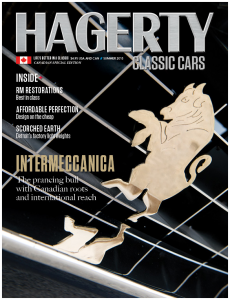 ElectraMeccanica has partnered up with InterMeccanica, a family-owned New Westminster-based high-end automobile manufacturer that has been custom building cars for their niche market since 1959. InterMeccanica knows how to make cars. Their precision and attention to detail is legendary; their rich history of innovation was recently the subject of a feature story in the Canadian edition of Hagerty. Now owned and operated by Henry Reisner, the oldest son of the founder Frank Reisner, InterMeccanica continues to produce custom order Porsche 356 Roadster and Speedster replicas.
ElectraMeccanica has partnered up with InterMeccanica, a family-owned New Westminster-based high-end automobile manufacturer that has been custom building cars for their niche market since 1959. InterMeccanica knows how to make cars. Their precision and attention to detail is legendary; their rich history of innovation was recently the subject of a feature story in the Canadian edition of Hagerty. Now owned and operated by Henry Reisner, the oldest son of the founder Frank Reisner, InterMeccanica continues to produce custom order Porsche 356 Roadster and Speedster replicas.
The partnership with ElectraMeccanica is a new venture for InterMeccanica and their imminent move back to their old location in the new Meccanica building in southeast False Creek represents an exciting step forward. The move was made possible through the vision of Scott Cressey of Cressey Development Group and Jerry Kroll CEO of ElectraMeccanica. The new Meccanica building is a unique mixed use light industrial / residential development.
 ElectraMeccanica, the brainchild of entrepreneur automobile expert Jerry Kroll, recently bought up the rights for the Sparrow, a car designed and showcased by Mike Corbin at the 1996 San Francisco auto show. Corbin Motors went on to produce several hundred Sparrows before becoming a victim of sour economic times in 2003. In 2004, Ohio-based Myers Motors stepped in to give the Sparrow a second chance. Unfortunately, despite rebranding it the Myers Motors NmG (No more Gas), improving its battery performance and redesigning the exterior, the Sparrow once more fell the way of troubling economic times. But this time should be different.
ElectraMeccanica, the brainchild of entrepreneur automobile expert Jerry Kroll, recently bought up the rights for the Sparrow, a car designed and showcased by Mike Corbin at the 1996 San Francisco auto show. Corbin Motors went on to produce several hundred Sparrows before becoming a victim of sour economic times in 2003. In 2004, Ohio-based Myers Motors stepped in to give the Sparrow a second chance. Unfortunately, despite rebranding it the Myers Motors NmG (No more Gas), improving its battery performance and redesigning the exterior, the Sparrow once more fell the way of troubling economic times. But this time should be different.
 Kroll and Resiner have brought their collective talents together to introduce their new, second generation Electra Meccanica EMV-17. Professionally designed, and with a range of 130 km on a single charge, the lightweight carbon fibre composite EMV-17 is capable of reaching a top speed of 140 km/hr and cruising at 110 km/hr. But here’s what makes the EMV-17 so attractive. It will retail for less than $20,000 Canadian.
Kroll and Resiner have brought their collective talents together to introduce their new, second generation Electra Meccanica EMV-17. Professionally designed, and with a range of 130 km on a single charge, the lightweight carbon fibre composite EMV-17 is capable of reaching a top speed of 140 km/hr and cruising at 110 km/hr. But here’s what makes the EMV-17 so attractive. It will retail for less than $20,000 Canadian.
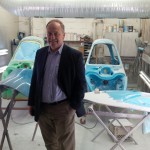 This past spring I had the opportunity to test-drive one of the original Sparrows (see image above). It was incredibly zippy and easy to handle, and I confess that more than a few heads turned as I drove by. Last Friday I was in Vancouver to tour the InterMeccanica facility and their new southeast False Creek location. There were a number of Porsche 356 Roadster and Speedster replicas in various stages of construction in the facility. In addition, two of the first refurbished Sparrows were being constructed.
This past spring I had the opportunity to test-drive one of the original Sparrows (see image above). It was incredibly zippy and easy to handle, and I confess that more than a few heads turned as I drove by. Last Friday I was in Vancouver to tour the InterMeccanica facility and their new southeast False Creek location. There were a number of Porsche 356 Roadster and Speedster replicas in various stages of construction in the facility. In addition, two of the first refurbished Sparrows were being constructed.
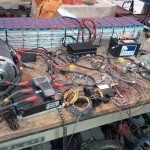 ElectraMeccanica have already sold their first ten 2015 pre-production Sparrow’s. They plan to roll out 120 EMV-17 cars in 2016, a further 1,200 in 2017 and an additional 1,800 in 2018. All of these EMV-17s will be constructed in the Metro Vancouver region.
ElectraMeccanica have already sold their first ten 2015 pre-production Sparrow’s. They plan to roll out 120 EMV-17 cars in 2016, a further 1,200 in 2017 and an additional 1,800 in 2018. All of these EMV-17s will be constructed in the Metro Vancouver region.
While the single occupancy electric vehicle may have struggled in the past, it seems pretty clear to me that times have changed. Obviously the price of gas has increased. But more importantly, there is a much greater awareness of the effects that increasing greenhouse gases are having on our climate. 2014 was a record warm year globally; 2015 is on track to break the record set just last year. In BC we have suffered from an extended drought and wildfires burned out of control this past summer. And things will only get worse.
 In the average British Columbia household, the automobile is the single biggest contributor to greenhouse gas emissions. It therefore represents the single greatest opportunity to reduce these emissions. Vancouver, bounded by the U.S. border to the south, mountains to the north and east, and water to the west, is one of the most ideal markets for the widespread introduction of electric vehicles. Victoria surrounded by water on three sides and the Malahat to the north, represents another. We typically don’t drive great distances daily in Vancouver and Victoria.
In the average British Columbia household, the automobile is the single biggest contributor to greenhouse gas emissions. It therefore represents the single greatest opportunity to reduce these emissions. Vancouver, bounded by the U.S. border to the south, mountains to the north and east, and water to the west, is one of the most ideal markets for the widespread introduction of electric vehicles. Victoria surrounded by water on three sides and the Malahat to the north, represents another. We typically don’t drive great distances daily in Vancouver and Victoria.
So it’s incredibly exciting to see homegrown innovation start to take off in this new, emerging sector of our economy – the clean tech sector. Who knows, pretty soon the 100% electric vehicle won’t be the head-turner. Instead, it will be the inefficient, 8-cyclinder gas guzzler of yesteryear.
Celebrating Local Businesses in Our Community – Hoyne Brewing Company
This is the fourth in our series highlighting innovation and creativity within our region’s business sector.
It was sweltering hot and the brewery was buzzing the afternoon we met with Sean Hoyne. As people filtered through filling growlers with their favourite beer we asked Sean to tell us about his brewery and how they got started. Though the Hoyne Brewing Company has only been open for three and a half years, Sean started their story in the 1970s – before commercial craft brewing had even begun in Canada.
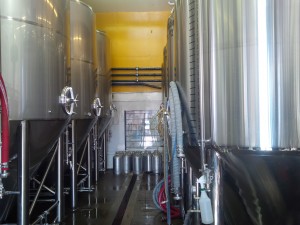 Frank Appleton, who Sean credits as the father of the craft beer movement in British Columbia, was a quality control supervisor at Carling O’Keefe’s but he had grown tired of the corporate beer scene and decided to quit in 1972. He spent the 1970s and 80s writing articles for the Harrowsmith magazine while brewing beer at his home in Edgewood, B.C. One of those articles, about the joys of home-brewing, caught the eye of John Mitchell who, at the time, was the co-owner and manager of the Troller Ale House in Horseshoe Bay.
Frank Appleton, who Sean credits as the father of the craft beer movement in British Columbia, was a quality control supervisor at Carling O’Keefe’s but he had grown tired of the corporate beer scene and decided to quit in 1972. He spent the 1970s and 80s writing articles for the Harrowsmith magazine while brewing beer at his home in Edgewood, B.C. One of those articles, about the joys of home-brewing, caught the eye of John Mitchell who, at the time, was the co-owner and manager of the Troller Ale House in Horseshoe Bay.
Mitchell had grown up in pub-rich England and was frustrated by the limited selection of beer in Canada. He tracked down Appleton and asked him if he would help him start a brewpub, a pub where good beer was both brewed and served. Far easier said than done at the best of times, Mitchell and Appleton first had to convince the local and federal governments to pass legislation that would make brewpubs legal. Previously, provincial law prohibited the public sale of beer at breweries but in 1981, after many meetings and rounds of legislation, they got approval to start brewing – and selling – their own beer from a single establishment (with the caveat that a commercial road separated the brewery and pub). Mitchell and Appleton opened Horseshoe Bay Brewery with a little store across the street on the waterfront, the first brewpub to open in North America since prohibition. From there, Mitchell and Appleton went on to open Spinnakers, Canada’s first in-house brewpub, and help dozens of other local breweries get started.
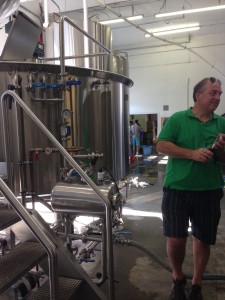 Sean enters this story, homebrewed six-pack in hand, in the late 1980s. He had a science degree to back up his beer brewing passion and he was keen to learn everything Appleton could teach him. He brought a case of homemade beer to his job interview with Appleton and let the beer speak for itself while they talked literature. Sean got the job and the two of them went on to set up the brewery in Swans Hotel in 1989. After a few years in the brewmaster role at Swans, Sean left to build the brewery at Canoe Brewpub. “I brewed there for 13 years, focusing on developing award-winning beers and fostering a sense of community between brewers and beer enthusiasts,” he said of his time at Canoe.
Sean enters this story, homebrewed six-pack in hand, in the late 1980s. He had a science degree to back up his beer brewing passion and he was keen to learn everything Appleton could teach him. He brought a case of homemade beer to his job interview with Appleton and let the beer speak for itself while they talked literature. Sean got the job and the two of them went on to set up the brewery in Swans Hotel in 1989. After a few years in the brewmaster role at Swans, Sean left to build the brewery at Canoe Brewpub. “I brewed there for 13 years, focusing on developing award-winning beers and fostering a sense of community between brewers and beer enthusiasts,” he said of his time at Canoe.
Ready to start a new chapter in a sector that was enjoying incredible public support, Sean moved into a space just outside of downtown Victoria and started to build the Hoyne Brewing Company. Starting with a team of one (himself), Sean is now one of 20 working at the brewery. In addition to serving liquor stores and customers who come into the brewery, Hoyne sells directly to bars and restaurants. They do their own deliveries, he explained, so they can provide the best service possible – even when their bottom line would recommend doing otherwise. They have partnered with Geazone, a local zero-emissions delivery service that uses electric cars and bike courriers, for their distribution. It costs more, said Sean, “but I like supporting Andrew, [Geazone’s president and CEO], because he is a young entrepreneur doing the right thing.” They even do their Victoria to Vancouver run with the zero-emissions fleet. Sean ensures two people are on each delivery run so they can share the job and help with the loading and rearranging of kegs in their drop-point’s cold room. It may seem like a simple gesture, but one that I’m sure is greatly appreciated by servers sent down to switch heavy kegs during rush hours. “We do what we can to support other businesses,” said Sean.
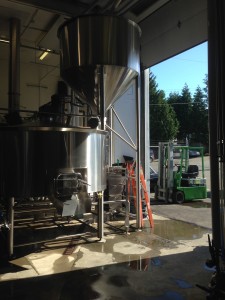 A central part of Hoyne’s mandate is to help wherever they can. It is a value system that has triggered countless positive ripple effects, both locally and abroad. They support charities (financially or with beer, where appropriate), including the Dirty Walls Project in India and source their equipment, hops, and malt from within B.C. The shiny stainless steel tanks found throughout the brewery were made on Vancouver Island and twice as expensive as their foreign-made counterparts, but the connections and collaborative friendships the brewery has made supporting local workers has made it more than worthwhile, said Sean. “If something is wrong with the tanks, they’ll be here at a moment’s notice to help out.” Local farmers are often at the brewery too, picking up loads of spent grain for their animals and gardens.
A central part of Hoyne’s mandate is to help wherever they can. It is a value system that has triggered countless positive ripple effects, both locally and abroad. They support charities (financially or with beer, where appropriate), including the Dirty Walls Project in India and source their equipment, hops, and malt from within B.C. The shiny stainless steel tanks found throughout the brewery were made on Vancouver Island and twice as expensive as their foreign-made counterparts, but the connections and collaborative friendships the brewery has made supporting local workers has made it more than worthwhile, said Sean. “If something is wrong with the tanks, they’ll be here at a moment’s notice to help out.” Local farmers are often at the brewery too, picking up loads of spent grain for their animals and gardens.
Comparing the rise of local craft breweries in B.C. with mega breweries like Molson that are now all run by non-Canadian owners (with the exception of Pacific Western), Sean attributes craft’s success with the sector’s determination to deviate from the mass-production business model. “Local craft breweries have social license,” said Sean. “They are involved in the community, transparent, open to the public, and authentic. I am in this industry because I like beer, to me it represents enjoyment and community.”
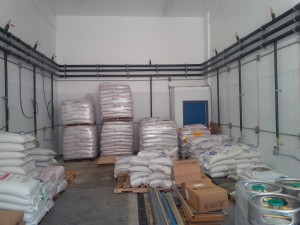 “People are always welcome to stop by our brewery,” Sean continued, “and every ingredient is listed on our bottles. We are proud of that.” As beer is not considered a ‘food product’ by the Canadian Food Inspection Agency, ingredient lists are not a requirement. Mass-produced beers, Sean explained, contain preservatives – which he stressed are not necessary unless you are selling old beer. “[At Hoyne] we don’t deliver our beer past where we can ensure it will arrive fresh so we don’t have to add anything extra, like preservatives. You can do things differently.”
“People are always welcome to stop by our brewery,” Sean continued, “and every ingredient is listed on our bottles. We are proud of that.” As beer is not considered a ‘food product’ by the Canadian Food Inspection Agency, ingredient lists are not a requirement. Mass-produced beers, Sean explained, contain preservatives – which he stressed are not necessary unless you are selling old beer. “[At Hoyne] we don’t deliver our beer past where we can ensure it will arrive fresh so we don’t have to add anything extra, like preservatives. You can do things differently.”
Sean and his team have made numerous adjustments to the status quo, from allowing their beer to naturally carbonate during the fermentation process (instead of releasing the CO2 and force-carbonating the beverage further along the production line) to building a glycol refrigeration system that allows them to cool individual tanks instead of the entire room.
As an enthusiastic supporter of the entire local craft beer sector, it was a pleasure to see the process in action and learn more about Hoyne’s community-based business model. Though I opted out of the taste-testing portion of my visit, because I was driving and had a CBC interview immediately afterwards, I already knew from experience that Hoyne’s Devil’s Dream IPA is one of my favourites.

